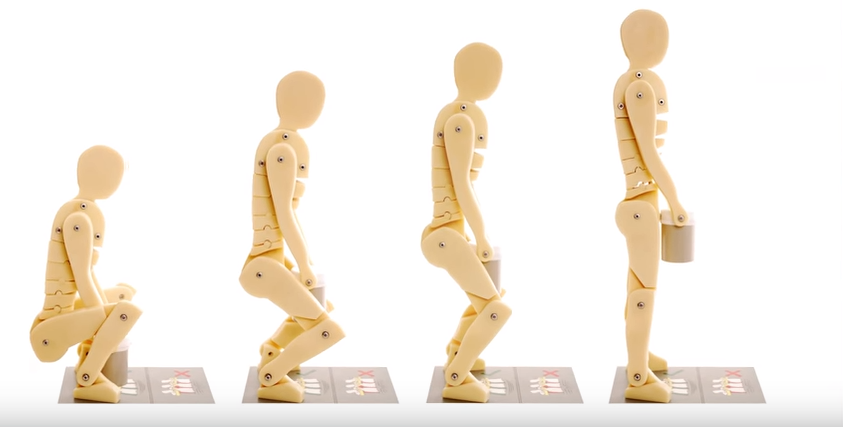
Did you know that caregivers have one of the highest injury rates of all healthcare providers? According to the US Bureau of Labor Statistics, 80% of all caregiver injuries are sustained as a result of lifting, pushing, pulling, holding, carrying, and turning clients. At Hearts at Home, we take injury prevention seriously which is why we recently presented a staff in-service on body mechanics, safe transfer techniques, and injury prevention in client care. It’s not enough to us to keep our staff injury free though, we recognize that most of our clients have family caregivers as well, so we’re sharing information today to keep them safe too! The key to keeping one injury free while caring for others comes down to three simple things: keeping oneself in shape, utilizing proper body mechanics, and being smart!
1. Keeping oneself in shape doesn’t have to be as hard as it sounds and requires just a few minutes every day of simple exercise and activity to keep the body flexible and the core strong…you don’t even have to break a sweat! There are thousands of great exercise videos available online for free that can run you through a basic stretching/strengthening program in 5-10 minutes a day that will do just that. For a more customized plan, visit a physical therapist and ask for a core stretching/strengthening program to help prevent injury. If you’ve got a history of back pain/injury, be sure to consult with your doctor before starting any exercise program.
2. You probably already know what proper body mechanics are, but do you implement them? The key things to remember when assisting with care are to maintain a stable base of support with feet shoulder-width apart and in a staggered stance, bend at the knees instead of your waist, avoid twisting and bending at the waist and instead turn with your feet, keep abdominals and buttocks tight to support the back, keep the object you are lifting close to your body, and utilize smooth and steady movements.
3. Work smarter, not harder! Just because you think you have the brute strength to do something, doesn’t mean you should do it. As caregivers, we put a lot of stress on our bodies day after day and eventually that takes its toll on the body. Lifting should be avoided whenever possible by asking the person you’re assisting to help as much as possible, asking another family member to help, using appropriate equipment to reduce the load (ie: sliding boards, mechanical lifts, etc), and setting the stage to prevent any unnecessary work (ie: adjust the height of the bed, placing surfaces as close together as possible to minimize transfer distance, using efficient processes for completing client care tasks to minimize repositioning).
If you or an aging loved-one are considering Personal Care at Home Services in Katy TX, please contact the caring staff at Hearts at Home Senior Care. Call us today 713-515-2567. We serve all of the Houston area.
STACEY WELFEL
Director of Training & Compliance
Mrs. Welfel serves as Director of Training and Compliance. She has more than 12 years of clinical experience as a neurological physical therapist, most of which was spent working with catastrophic rehab clients at TIRR Memorial Hermann Hospital. She currently works as a physical therapist and clinical coordinator for Rehab Without Walls, a unique rehabilitation concept providing patients with neurological injuries the functional skills necessary to return to their home and community.

